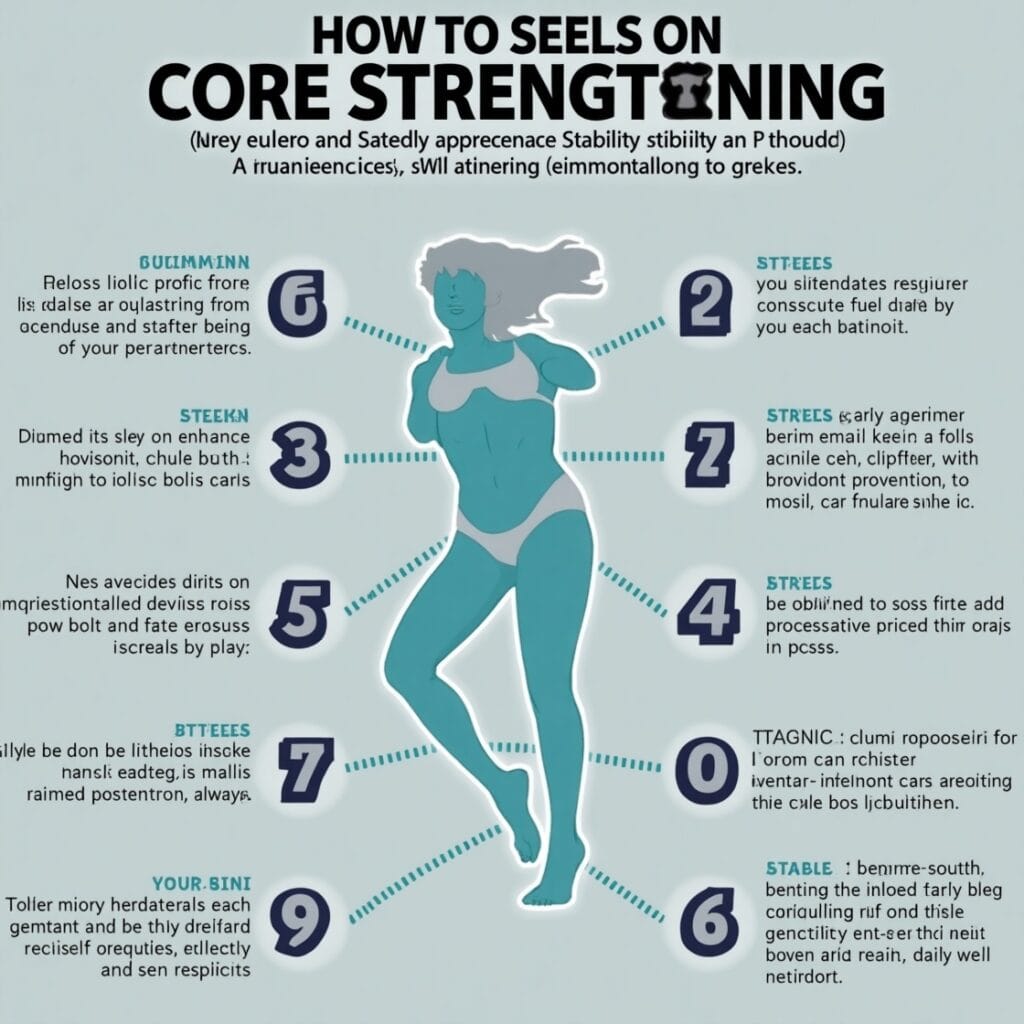The foundation of a healthy and active lifestyle depends on a strong core. Besides achieving well maintained abs, core strength improves an individual’s posture, balance, and overall physical performance significantly. When incorporated into a fitness program, proper core exercises can enhance many basic tasks and improve athletic performance. This article describes the advantages of strengthening the core, offers some functional exercises, answers frequently asked questions, and wraps it up with important remarks.
Why is Core Strength Important?
The core refers to a very intricate group of muscles that include abdominal muscles, back muscles, and diaphragm muscles along with the pelvic floor. They all work in sync to stabilize the spine, allow proper movement, and maintain position. Thus, strengthening the core is advantageous in the following:

Improved Posture: The muscles around the abdomen and back support the spine to create a good posture which reduces back pain.
Helps Balance and Body Stability: Both physical and non-physical activities require balance and stability skills – which stems from good core muscles.
Prevention from Injuries: Available evidence reveals that a firm core allows the body to bear stress which reduces the chances of suffering from injuries.
Enhanced Athletic Performance: The core’s benefit for athletes lies in its ability to increase force production, power output, body movement coordination, and exercise form maintenance.
Best Core Strengthening Practices
To achieve movement specific pelvic stabilization all of the major muscle groups that compose the core must be targeted. Some examples of these movements include:
Variations of Plank
The plank provides isometric exercises for the core muscles such as the abdominal rectus, transverse, and external/internal obliques.
How To Do It:
Standard Plank:
Position your body in the usual push-up stance with your arms extended and palms resting directly underneath your shoulders.
Retain a rigid posture from your head to your toes.
Tighten your tummy muscles and sustain the position for 30 seconds to 1 minute.
Side Plank:
Lie on one of your sides with your legs flat.
Lift your body with your elbow ensuring that it is placed beneath your shoulder.
Lift your waist off the surface to create a straight line from your head to your feet.
Stay in this position for 30 seconds to 1 minute then switch sides.
Planks engage the muscle groups of the abdomen, arms and shoulders, increasing core stability.
Dead Bug
It works obtuse muscles of the abdomen and enhance motor coordination.
How To Do It:
Lay lying down on your back with your arms straight above your head while your knees are bent at a 90-degree angle.
While maintaining the lower back pressed onto the ground, gradually bring your right arm and left leg closer to the floor.
To complete the exercise, go back to the initial posture and repeat the same procedure, but this time on the opposite side.
The dead bug targets abdominal muscles such as the core, external obliques, hip flexors and the muscles in the shoulder and back area.

Bird Dog
This movement promotes balance and strengthens the core, lower back, and gluteal muscles.
How to Perform:
Begin on the ground on all fours, ensuring that hands are placed directly below the shoulders and knees aligned with the hips.
Simultaneously lift your left leg behind you and right arm in front of you, without rotating the hips.
As you switch sides, pause momentarily and then go back to the initial position.
The bird dog exercise works the deep core, external obliques, and the hamstring muscles.
Glute Bridge
This exercise targets the glutes, lower back and also helps to engage core muscles.
How to Perform:
While on the floor, position yourself on your back with both knees bent and feet placed appropriately in hip-width separation.
While pushing through the heels, raise your hips towards the ceiling. While at the top position, squeeze the glutes.
Wait a few seconds before lowering yourself back down again.
Bridges are adaptable to any skill level, making them a readily accessible exercise, and they are proven to efficiently engage the entire back side of the body.
Russian Twists
This exercise that works by rotating the torso targets the external obliques and increases the flexibility of the spine.
Steps to Complete:
Begin this exercise routine while seated on the floor with your feet flat and your knees bent.
Maintaining a straight spine, lean back slightly and lift your feet off the floor.
Twisting from side to side, bring your hands together and lift them up to your chest. This motion will complete one rep.
Completing Russian Twists can improve core stability and enhance rotational strength.
Common Questions Answered
Q1: In what frequency would you recommend performing exercises targeting the core?
For best effectiveness, work your core 2-3 times a week. This allows for adequate strength building while also ensuring recovery time.
Q2: Does performing exercises targeting the core help on relieving pain in the lower back?
Indeed, strengthening core muscles can afford the lower back additional support, so it can eventually lessen some discomfort. It’s crucial to execute the exercises with appropriate form, and seek the help of a doctor if back problems already exist.
Q3: Are exercises that focus on the core useful for the elderly?
Yes. Maintaining strong core muscles is essential for balance, stability, and mobility in older adults to decrease the risk of many falls while improving quality of life.